So Many Bikes
It looks like I have a PROBLEM!
Some may say the problem is that I have too many bikes, and others may ask why does one need so many bikes? It is possible that they are right.
I am more of the mind that my problem is, figuring out how to neatly store all my bikes in a way that they are relatively easy to access.
Currently, If I want to use the orange bike way in the back, I must move all the bikes to get there. Long term, this is not a sustainable solution.
Also, the bikes are being stored in the bike room/guest room and it needs to be set up so it can easily be converted to the guest room when people arrive, thus the need for a DIY bike stand.
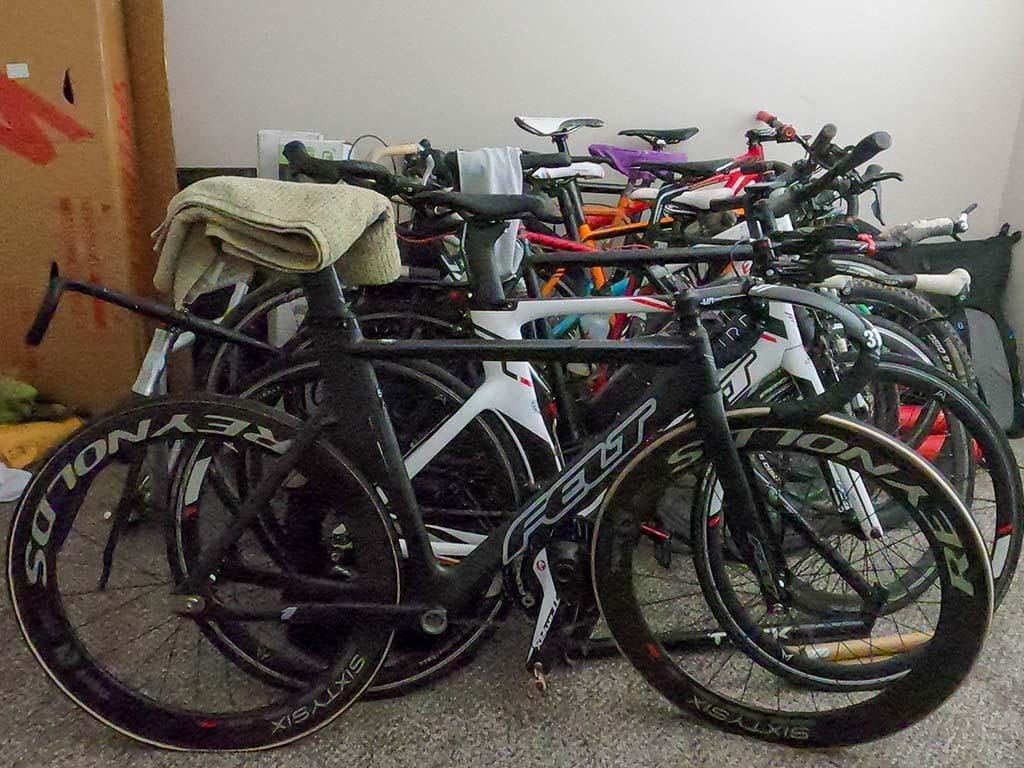
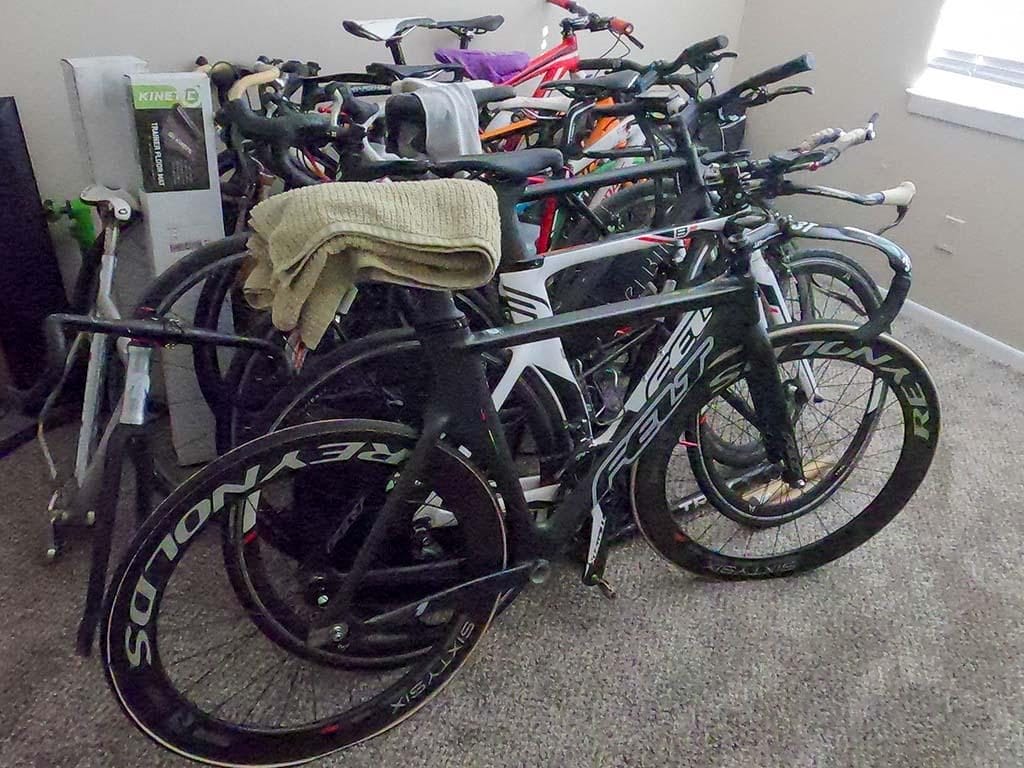
How did We Get Here
My fiancé and I have moved to a new city (Huntsville, AL). I recently finished grad school and we both have found work.
Our previous house, though relatively small, had a basement and a two-car garage. I stored commuter bikes in the garage and had a dedicated bike room in the basement.
The new apartment is quite large but doesn’t offer the space (for my bikes anyways) that our previous house had.
With the constraints of having a bike room and guest room in one and that it is an apartment (so I don’t want to put holes into the wall), I have decided to build a freestanding DIY bike stand.
Existential Question
Why does one need so many bikes? Simple answer, they don’t.
But…
They do.
Most people probably only need 2-3 bikes depending on the disciplines they ride. Right now, gravel cycling is very popular and typically one needs a road bike along with a gravel bike.
If someone likes to mountain bike, they may want a few different frame styles (e.g., cross country, all trail, downhill, etc.) with each one having a different geometry, tire size, and other things to make them more suited for certain terrains.
I on the other hand, am a Jack of all trades, and basically a master of none then.
But also, I just love bicycles. Therefore, I have multiple road bikes, cyclocross/gravel bikes, Time Trail bike, multiple mountain bikes, and a few track bikes.
Thus, my justification of having so many bikes is to have one bike for each discipline I enjoy.
Road cycling is my preferred discipline and therefore I have multiple road bikes. One is typically left on the trainer, one is an all-weather bike, and my newest one is just because it is fancy.
I have been cycling for quite a few years and sometimes it is hard to justify selling a bike for less than I originally paid for it. So, I hold on to my old bikes.
Let’s build this DIY bike stand
DIY Bike Stand Constraints
Goals needed to be satisfied for this build:
- Needs to be freestanding as to not damage walls in the apartment.
- Leg spacing needs to be about 6 ft (1.83 m) apart. (The bike room will also serve as a guest room; therefore, I need room for a mattress).
- Shorter than 8 ft (2.44 m) tall.
- Hold at least 7 bikes.
- Design that uses a minimal amount of material.
Sawhorse Style Bike stand
The inspiration for this freestanding DIY bike stand build came from BERMSTYLE. After doing a google search of the different possibilities of DIY bike stand, this was most like what I wanted.
The Bermstyle build used pre-made sawhorse brackets. It seems like they use drywall screws to connect the brackets to the lumber, I would NOT recommend doing that. Make sure to use construction or deck wood screws.
One modification I made and would also recommend is going with a 2 in x 6 in across the top, instead of a 2 in x 4 in as used in the Bermstyle build.
So, let’s talk about this build…
Being that I have a background in construction, mainly residential framing, I have built many sawhorses without using sawhorse brackets. And these sawhorses have been loaded up with some heavy materials.
Assuming 7 bikes on the stand at an average of 25 lb (11.3 kg) per bike and some extra accessories (hooks holding bikes, bike tires, etc.) are another 25 lb (11.3 kg), that is about 200 lb (90.7 kg) that the bike stand needs to carry. Which really isn’t too much.
I figured the shear strength of the screws would be more than enough to carry that load without using the brackets.
If you would prefer brackets, I will place a link below. I will say using the brackets would simplify the build.
Other stand considerations were a compression stand and an L-shaped stand.
The compression stand would span from floor to ceiling and would have boards spanning horizontally to carry the bikes. This would have required more materials and could have damaged the ceiling.
The L-shaped stand would have also required more material and wouldn’t have been as stable.
Single bike holder wall art from old bike parts.
Top Beam
For the top beam of the DIY bike stand, I am using an upside-down T-beam. This was done for a few reasons:
- 1) To add strength to the 2 in x 6 in board.
- 2) Allows easier attachment of the legs since they will go out at an angle.
- 3) Allow more room to attach the bike hooks instead of directly attaching to the 2 in x 6 in board.
The Build
Depending on how skilled you are with carpentry and if you have all the proper tools, this build can be done in about 1-2 hours.
Currently, I don’t have a circular saw (which I highly recommend using), so I used an oscillating saw to make my cuts.
An oscillating saw takes longer to make cuts and it makes it harder to make clean straight cuts. Worst case, if you are using a handsaw, it may take a little longer to build and you may want to consider using the sawhorse brackets.
Since the T-beam was going to be close to the ceiling and out of the way, I left at the full 8 ft (2.44 m) length.
My last constraint was that the DIY bike stand would be butted to the wall right next to the closet door. Thus, I only had about 32 in (812.8 mm) to work with.
I decided that the space of the legs at the ground would be 30 in (762 mm). At the bottom of the legs, I attached a 2 in x 4 in board. This will help keep the legs from sliding apart and will help spread the load over a larger surface area and not damage the carpet on the floor.
The Tools
- Drill
- Drill bits and drivers
- Saw (circular, oscillating, handsaw, etc.)
- Saw Blade
- Tape measure
- Marker or Pencil
- Step ladder
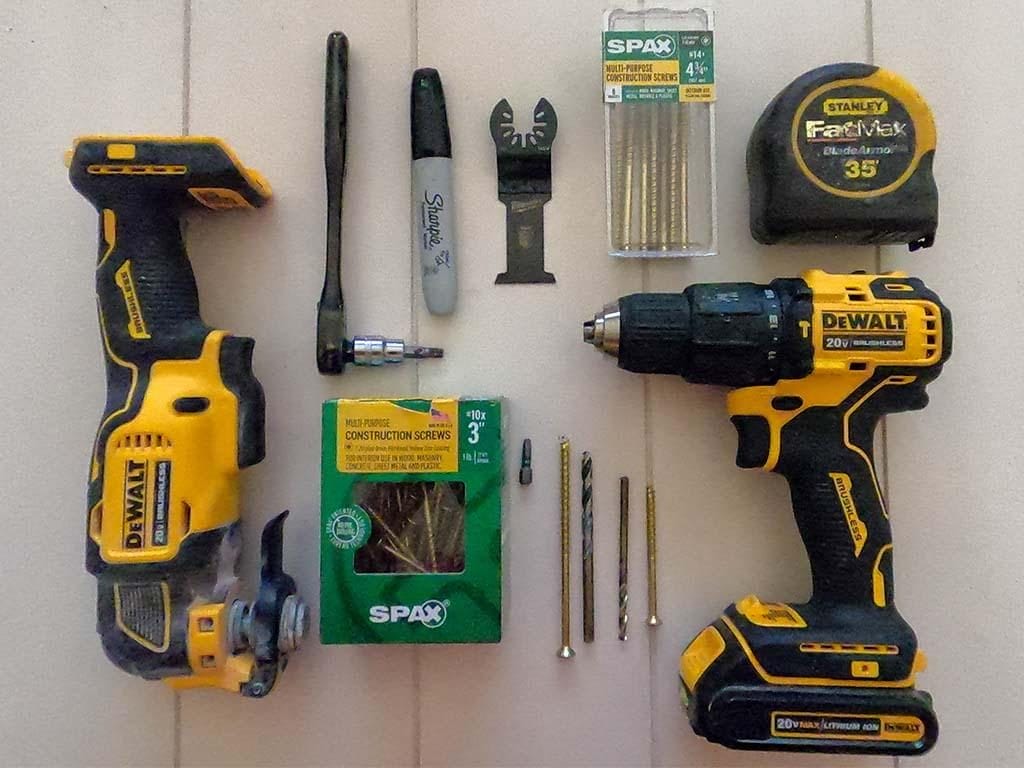
Build Materials
- 6 – 2 in x 4 in x 8 ft interior lumber
- 1 – 2 in x 6in x 8 ft interior lumber
- 1 – 1 lb box of 3 in (76.2 mm) construction wood screws (can also be 3.5 in [88.0 mm])
- 1 small box of 4.75 in (121 mm) construction wood screws (these were on sale, and I wanted to add extra strength)
- 8 or more bicycle hooks
- Optional:
- Sawhorse brackets

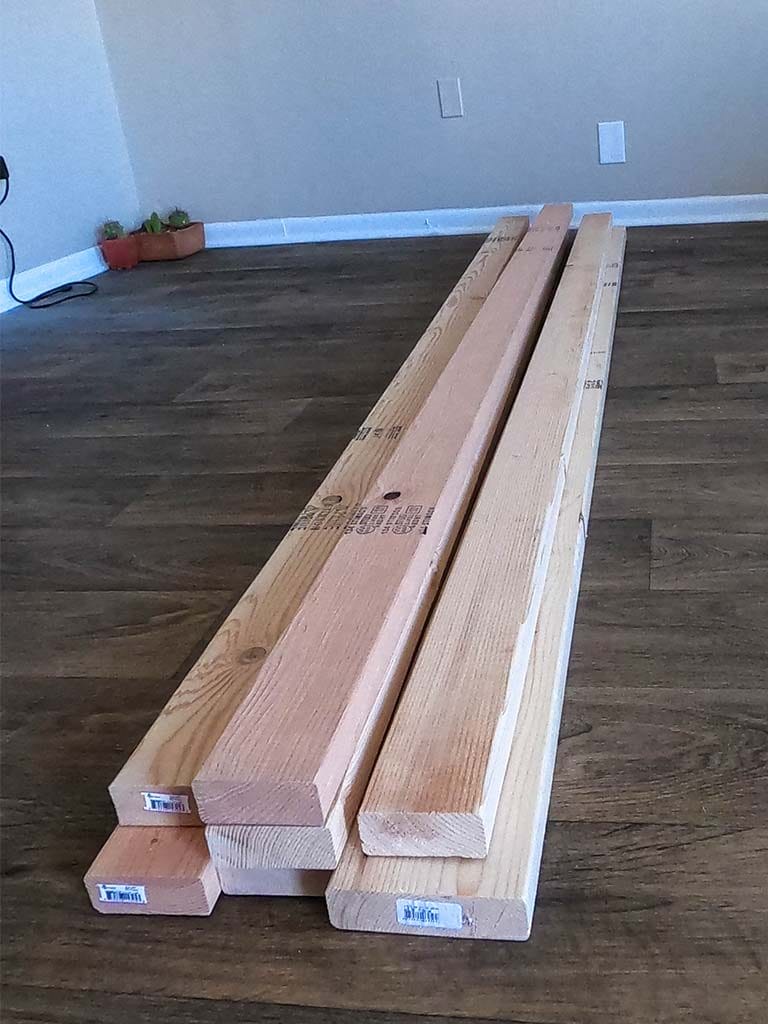
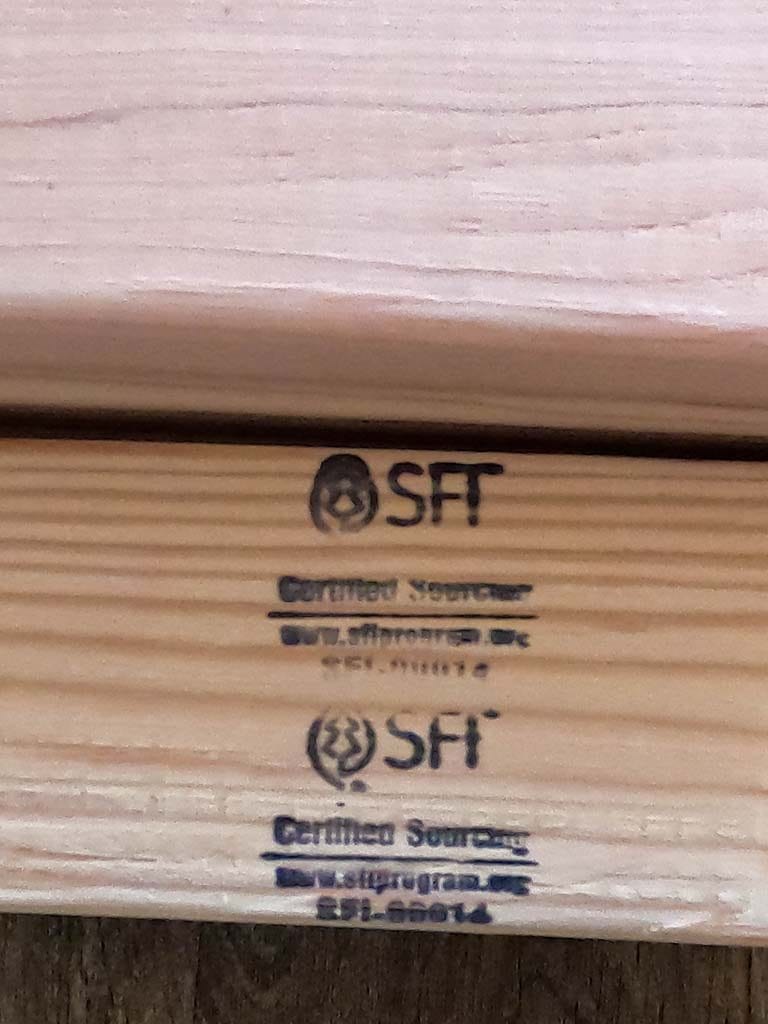
Step-by-Step Build
-
Determine the amount of space you need between the hooks. Since I am mainly hanging drop bar bicycles and I typically run 42 mm bars, I settled on 11 in (279.4 mm) space between the hooks. For easier access to bicycles consider larger space between bikes (12 in to 14 in. [304.8 mm to 355.6 mm]).
1
-
Now that we determined the hook spacing in step 1, lay out the hook placement locations on the 2 in x 4 in board. This will ensure we do not place any screws in those locations when we are building the T-beam.
2
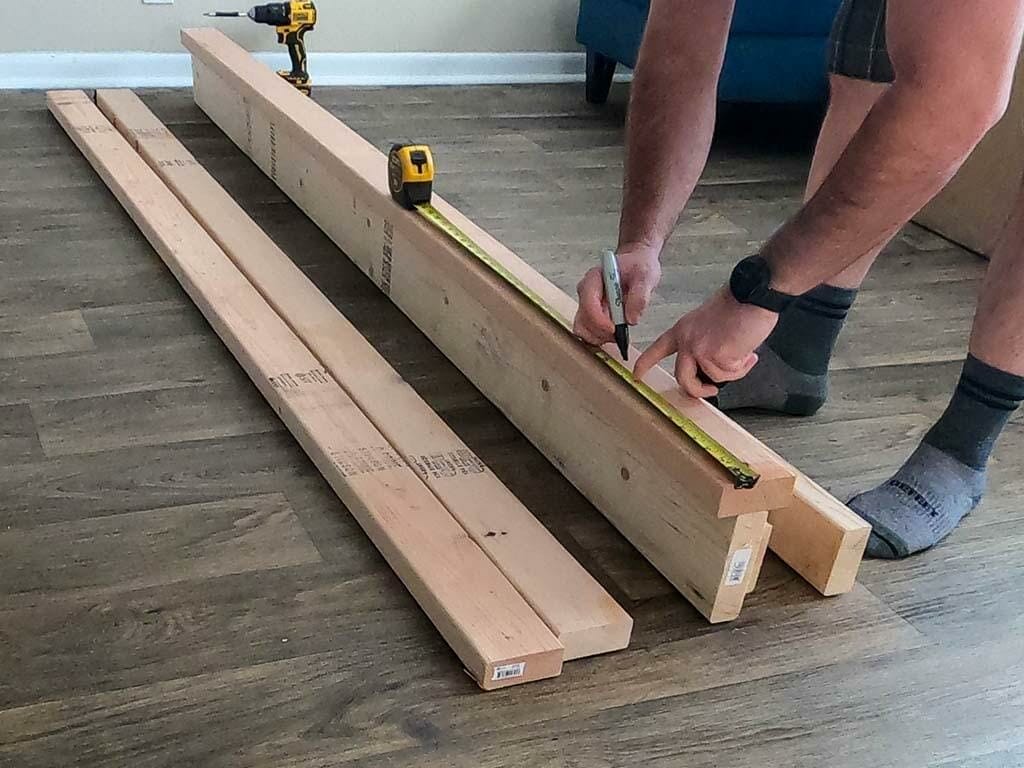
-
Build the T-beam. Place the marked 2 in x 4 in on top of the 2 in x 6 in and screw the boards together creating T-beam. Placing screws every 8 in to 10 in (203 mm to 254 mm). I used a total of 11 – 3 in screws.
3
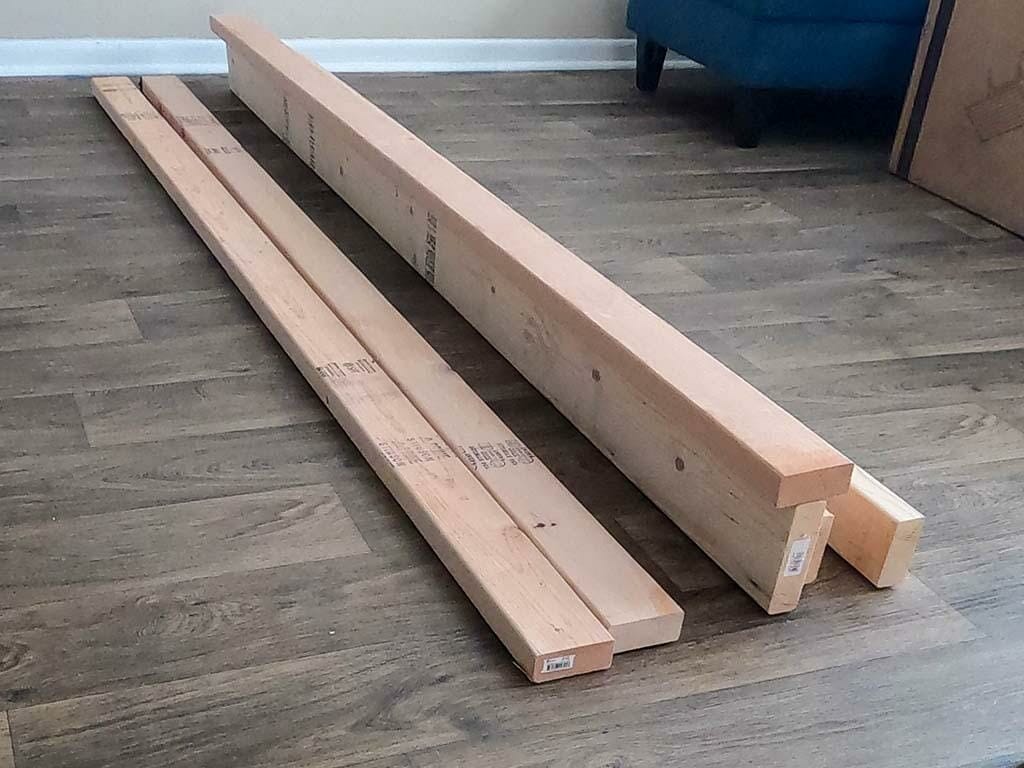
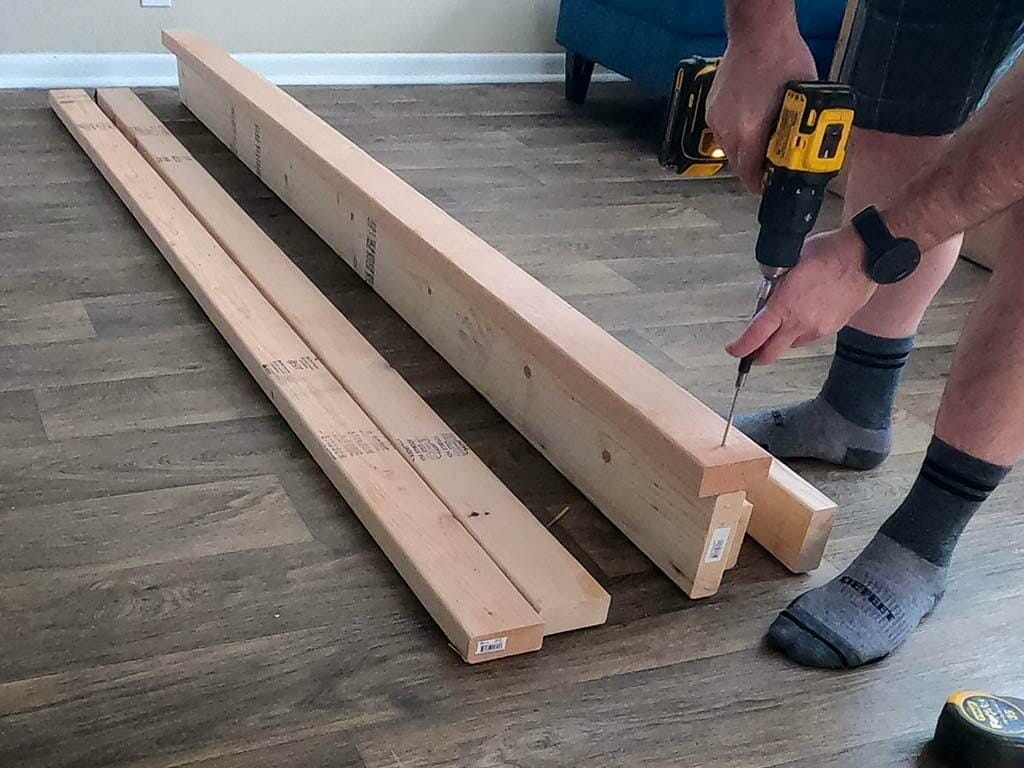
-
Predrill the holes for the bike hooks using a 5/16 in drill bit.
4

-
Determine how tall you want your freestanding DIY bike stand to be. I decided on 90 in (2.29 m) so it would be slightly below the ceiling, allow for longer wheelbase MTBs, and allow for storage under the bikes that have shorter wheelbases.
5
-
Figure out the length of the legs. Using Pythagoras’ theorem of right-angled triangles (ugh, right! Math…, but here is an online calculator), knowing that half the base length is 15 in (381 mm) and the height is 90 in, it turns out that the legs are about 91.25 in (2.32 m).Figure out the length of the legs. Using Pythagoras’ theorem of right-angled triangles (ugh, right! Math…, but here is an online calculator), knowing that half the base length is 15 in (381 mm) and the height is 90 in, it turns out that the legs are about 91.25 in (2.32 m).
6
Online Calculator Here

-
Cut the base plate out of one of the 2 in x 4 in boards. Mine are 30 in (762 mm) long.
7
-
After marking the length of the legs, I placed the legs in the A-frame configuration. Place the base plate on top of the legs at the 91.25 in marks, then adjust the width of the legs to 30 in using the base place as a guide. Then marked the legs the on the top side of the base place, this will leave the proper angle and length marked on the legs where they need to be cut.
8
Note: Marking the topside instead of the bottom then takes into account the extra 1.5 in (38 mm) height of adding the base plate to the bottom of the legs, thus making the final height of the bike stand 90 in tall. Another way would be to just assume the height of the stand is 87.5 in (2.22 m) instead then calculate the length of the legs in the above calculator. Then adding the base plate will raise the DIY bike stand up 1.5 in to about 90 in tall.
-
Mark the sides of the legs and cut the legs.
9
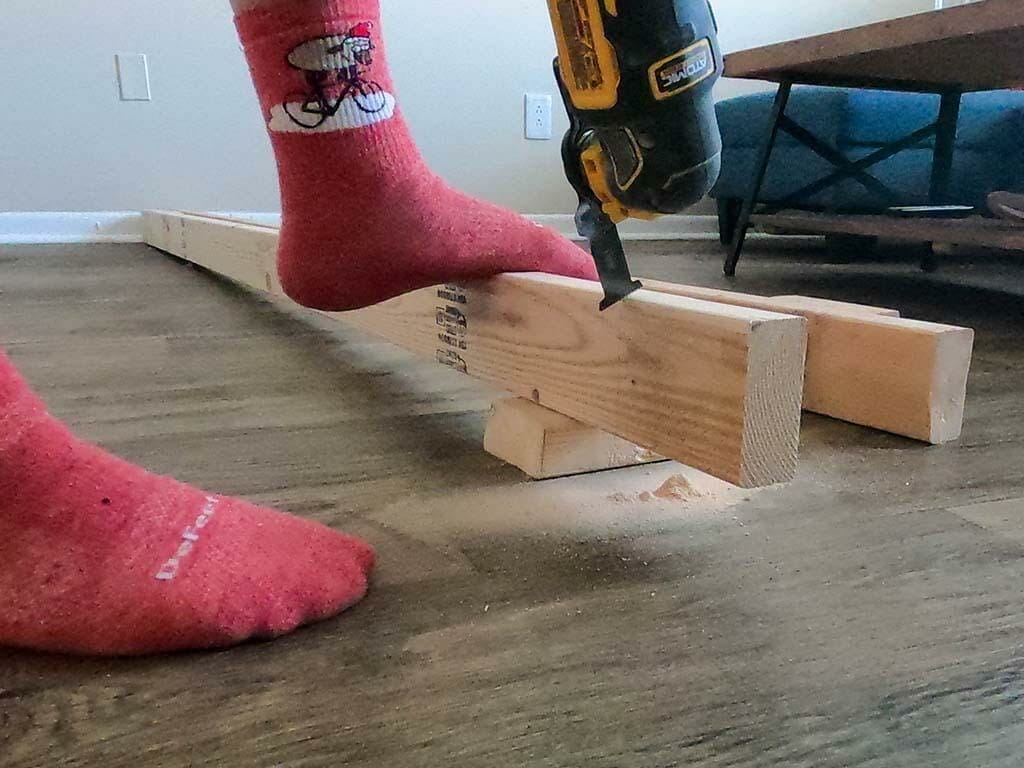

-
10. Attach the base plate to the bottom of the legs using 2 – 3 in screws in each leg.
10
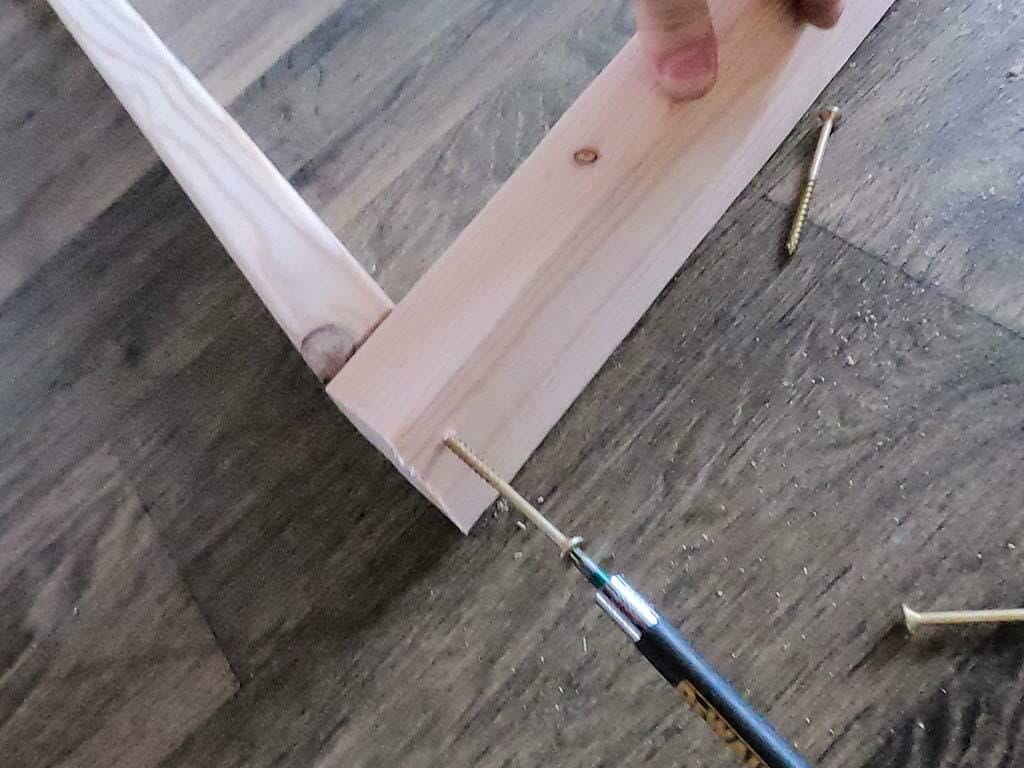
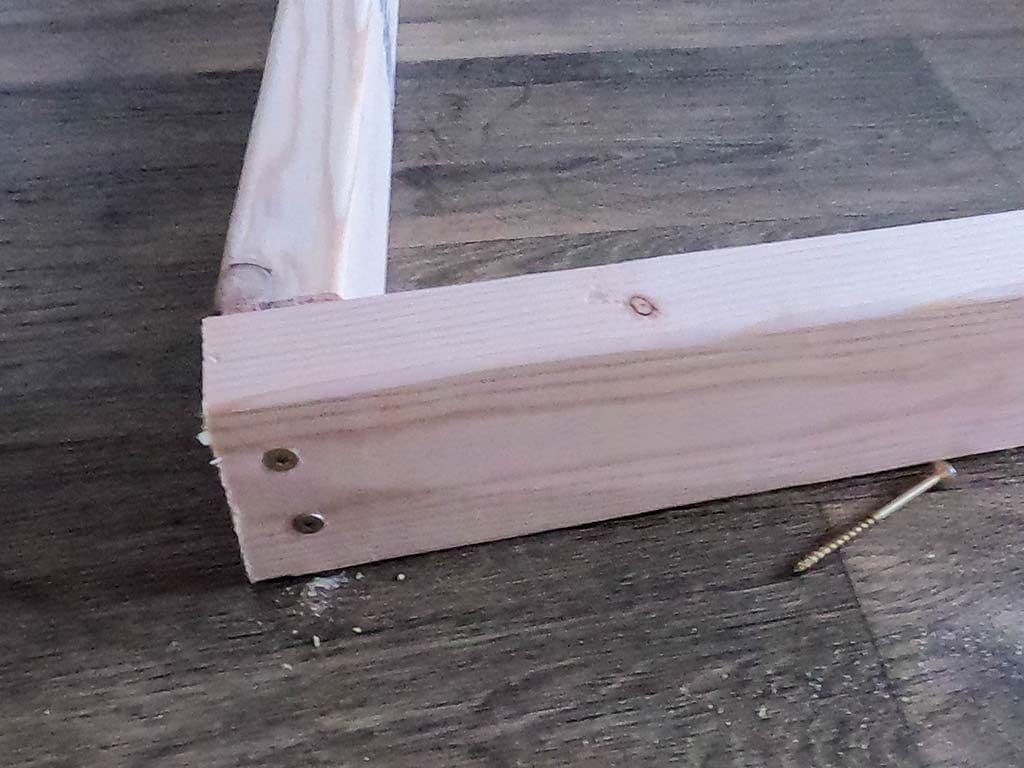
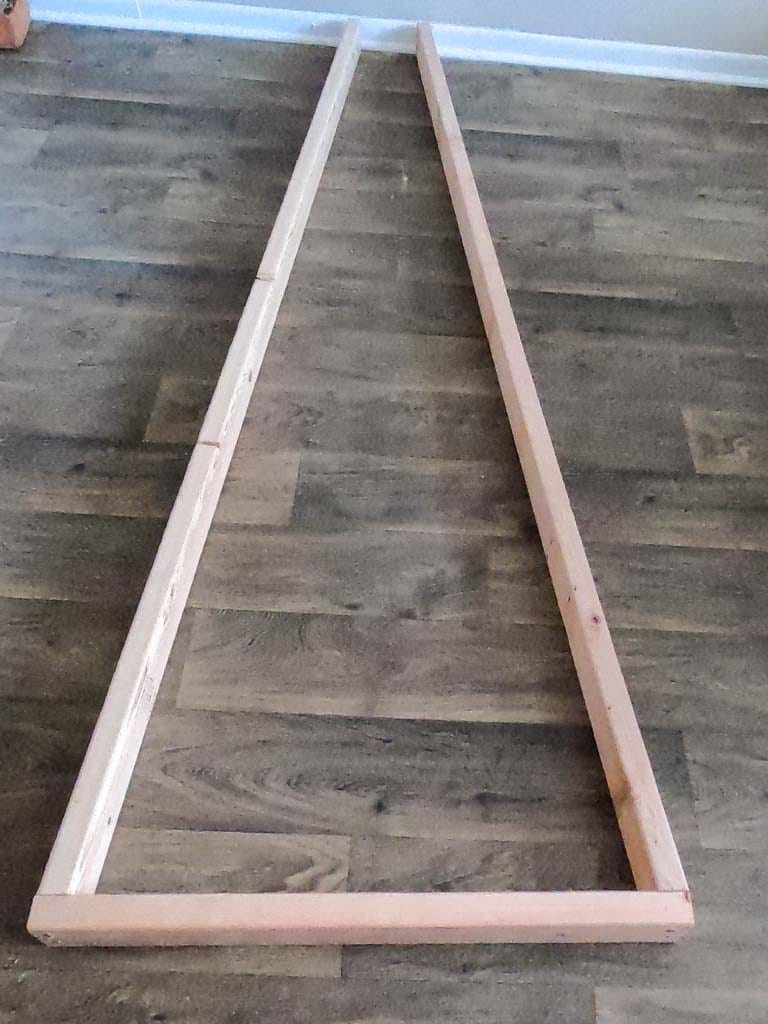
-
Determine how far apart you want the set of legs of the stand to be and mark the locations on the T-beam. I needed space for a bed to fit in the room, so I put set of legs flush on one side of the beam and the other set legs at about 78 in (1.98 m) away.
11
-
Assembly:
-
With a helper (makes assembly much easier), raise the T-beam and attach the top side of the legs to the beam. Make sure the top edge of the legs is flush with the top of the beam. On each side of the beam in each leg, I used 4 – 3 in screws and 2 – 4.75 in screws to attach the legs. One of the 4.75 in screws went into the 2 in x 4 in board of the T-beam and the other went through the leg, through the T-beam, and into the leg on the opposite side.
12
Note: I built this alone. First, I attached one set of legs to the T-beam, arranging the legs at an angle and the beam perpendicular to the legs. After attaching the first set of legs, I placed the base of the second legs to about where the needed to be, raised the beam up and swung the top of the legs to mark on the beam, and then inserted the screws.
Pro Tip: To make the DIY bike stand build a little easier, start the screws in the legs a little bit before trying to attach the legs to the beam.
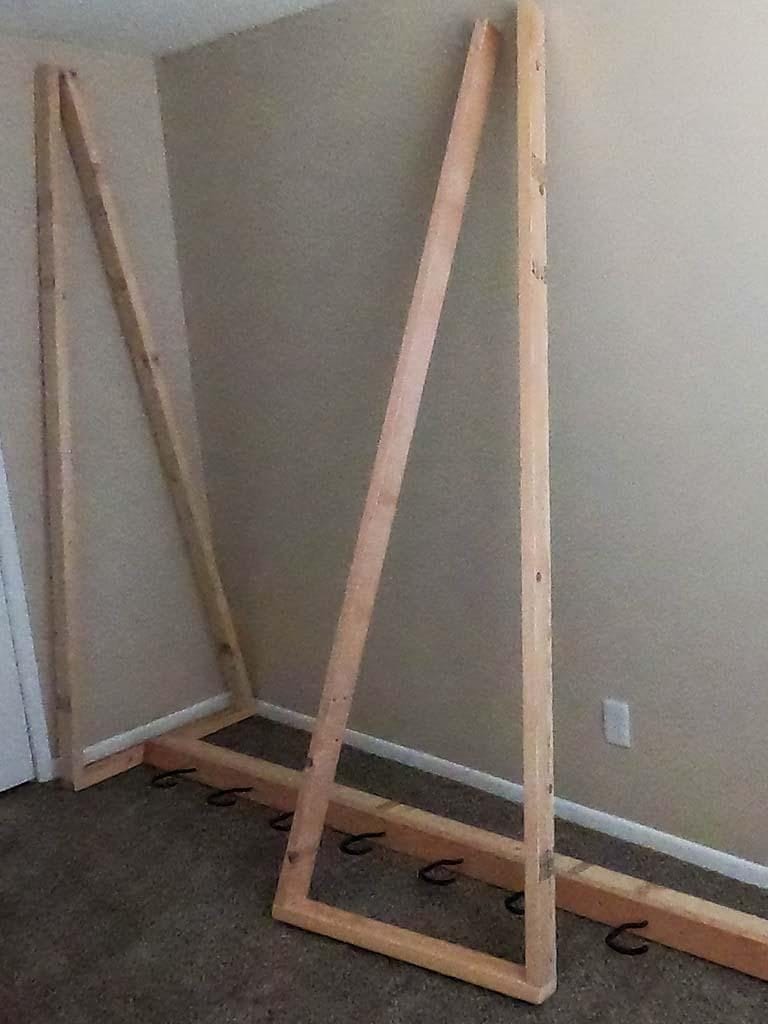


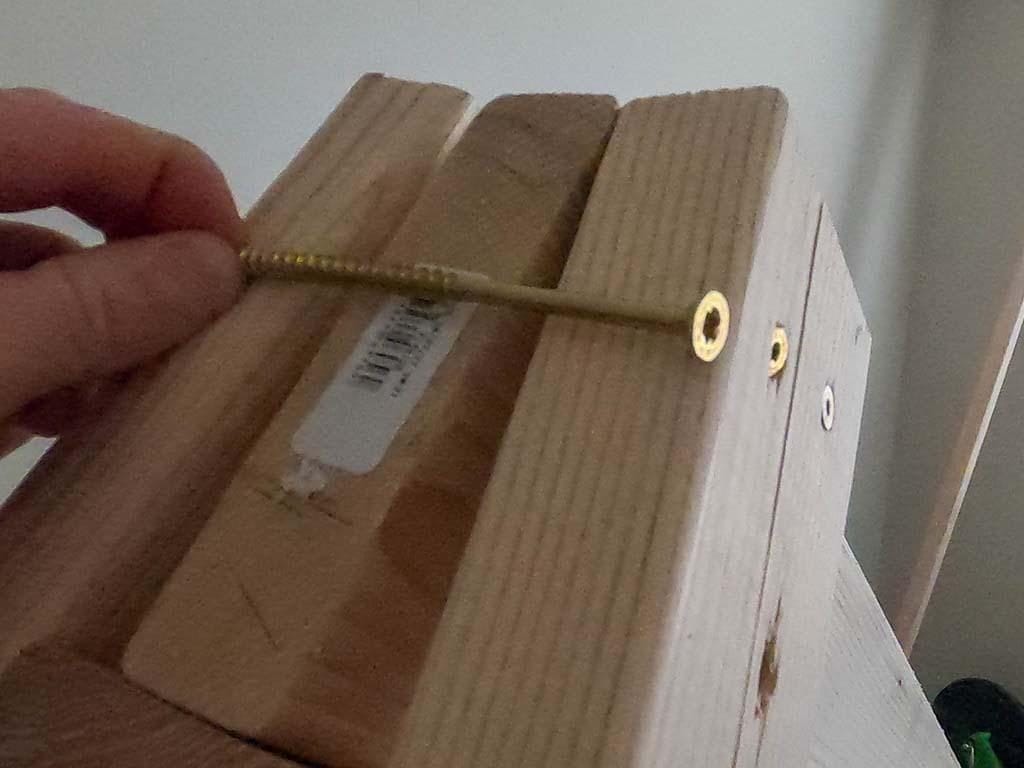



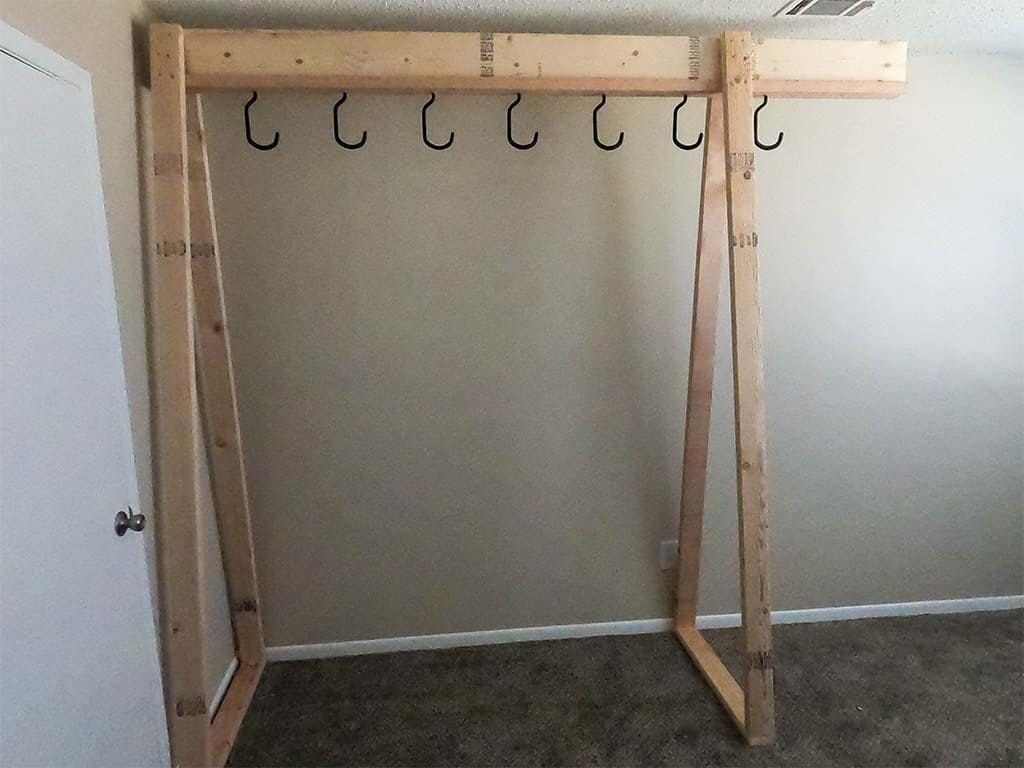
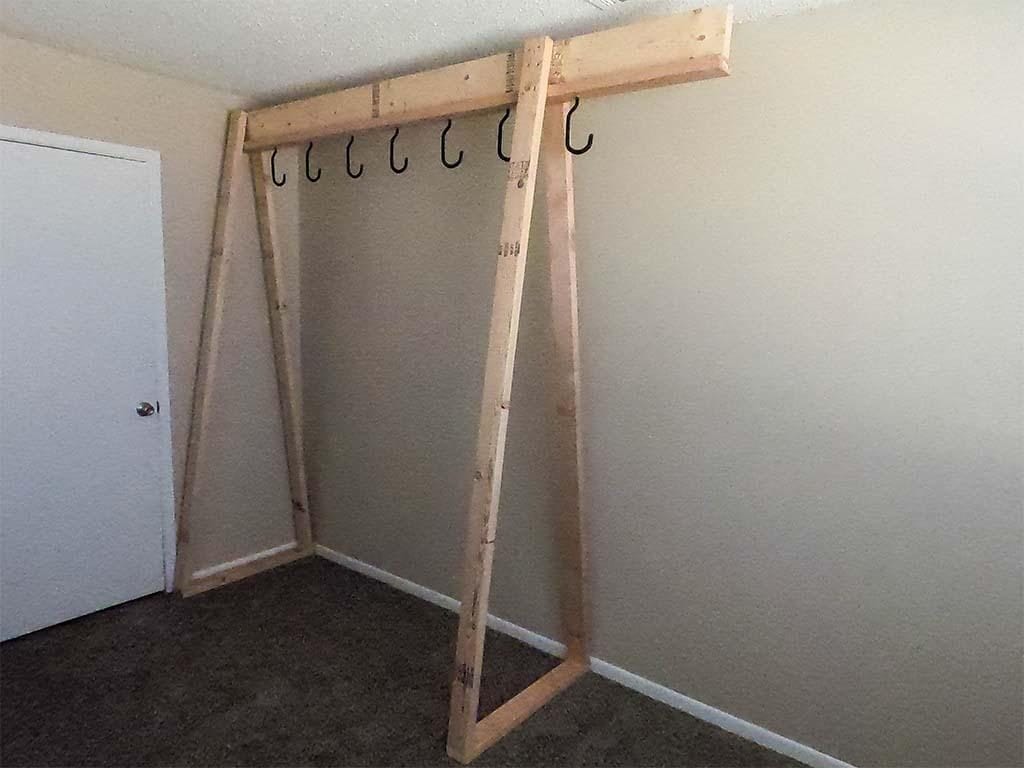
-
Hang Bikes on your DIY bike stand!
13
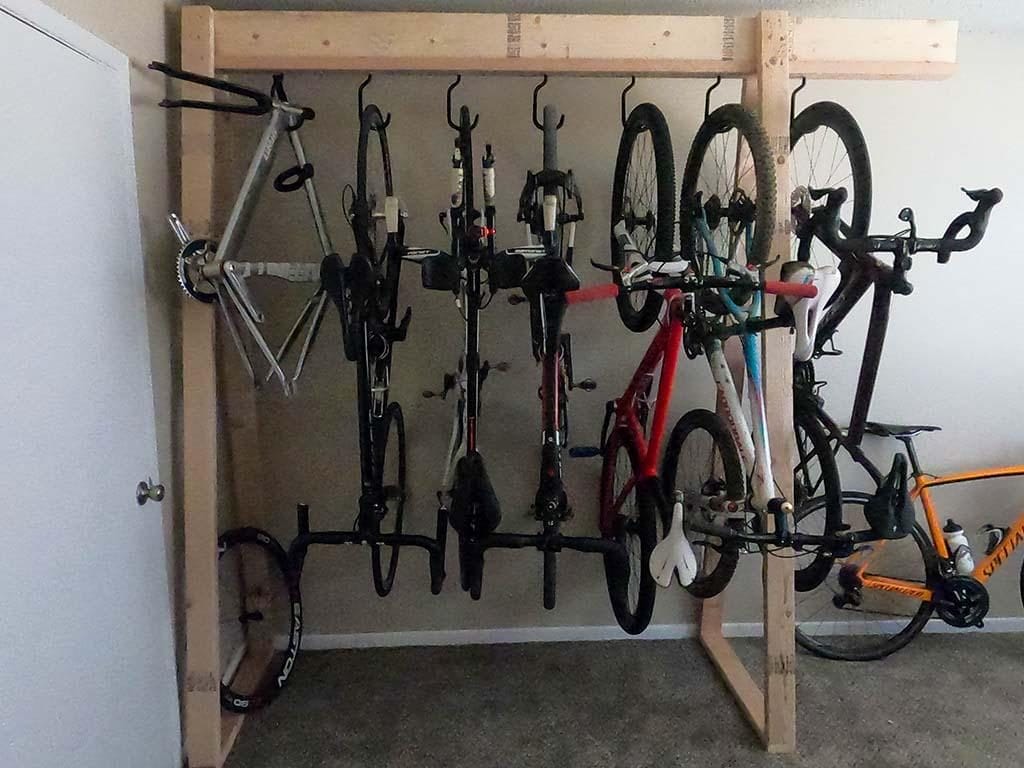
Conclusion
If you are looking for a relatively low budget way to store your bikes that won’t damage the walls, this build could be for you. As of lately, wood prices are insanely expensive, and this build was a bit more than I would like to have spent. Overall, I am happy with the design of this DIY bike stand, and it has really helped organize the room.

Costs in USD
- 2 in x 4 in x 8 ft boards $6.98 each
- 2 in x 6 in x 8 ft board $12.98
- 3 in screws 1 lb box $11.98
- 4.75 in screws small box $1.10
- Heavy duty Hooks 10 pack $14.97
Total not including taxes $82.91
Save time and money by buying some of these items on Amazon.
Support JayLo Cycling
Did you find this post useful? If you have any questions, feel free to leave a comment below. If you have any suggestions of future reviews or things you would like to see in the future contact me. My reviews are thorough and often take a significant amount of time to produce. Please consider checking out my Instagram, YouTube, and Facebook accounts to show me support there. If you feel generous and have the ability, consider buying me a coffee to help support this site.
Some of the items for this build can be purchased on amazon using my affiliate link. At no extra cost to you, using my link you will help support this site. Jason Lopez is a participant in the Amazon Services LLC Associates Program, an affiliate advertising program designed to provide means for sites to earn advertising fees by advertising and linking to Amazon.com.

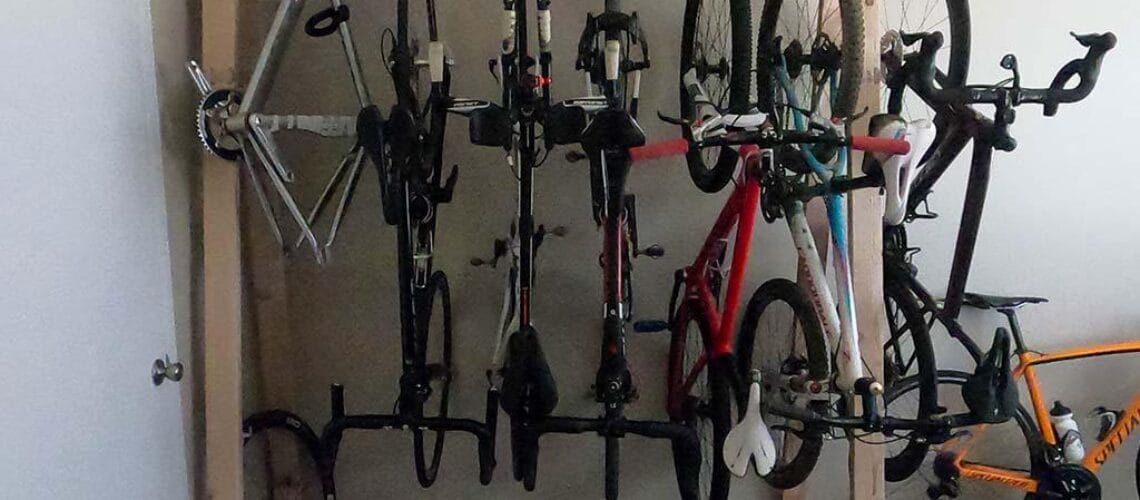

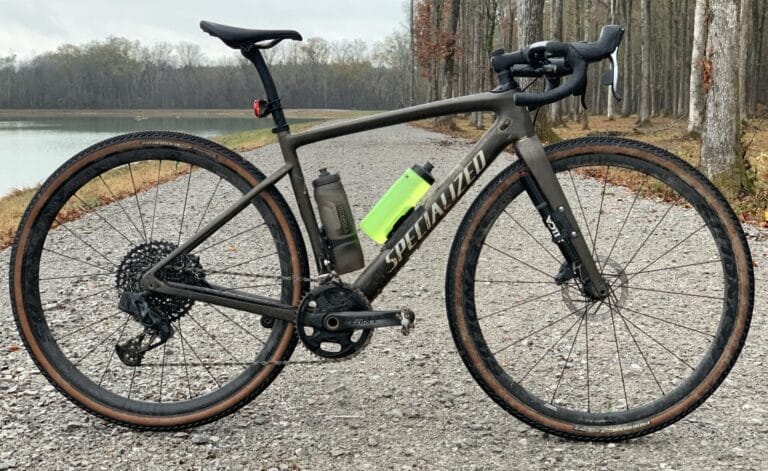
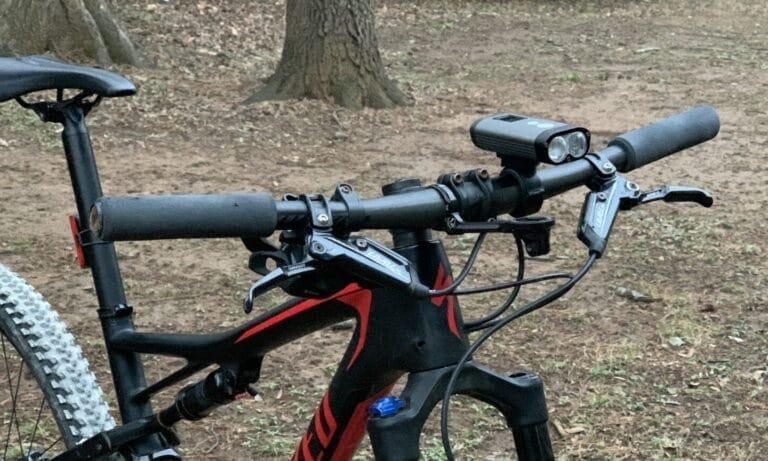
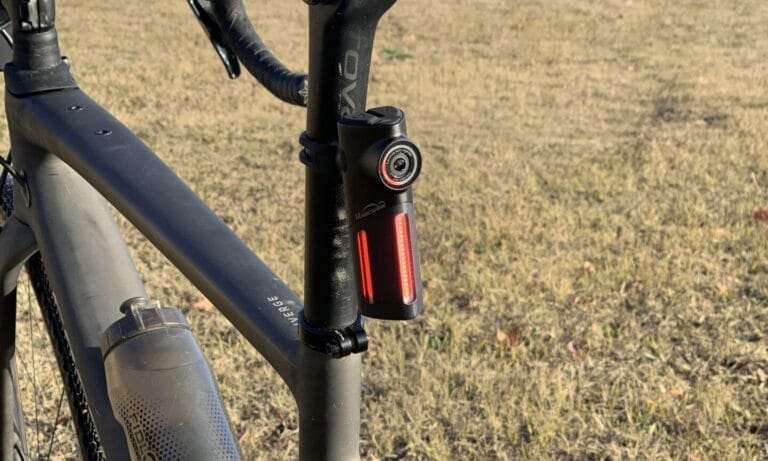

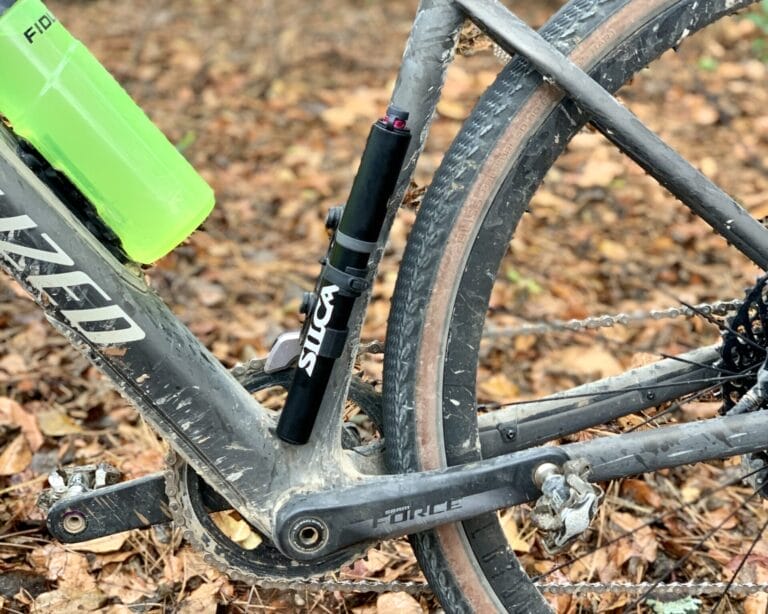
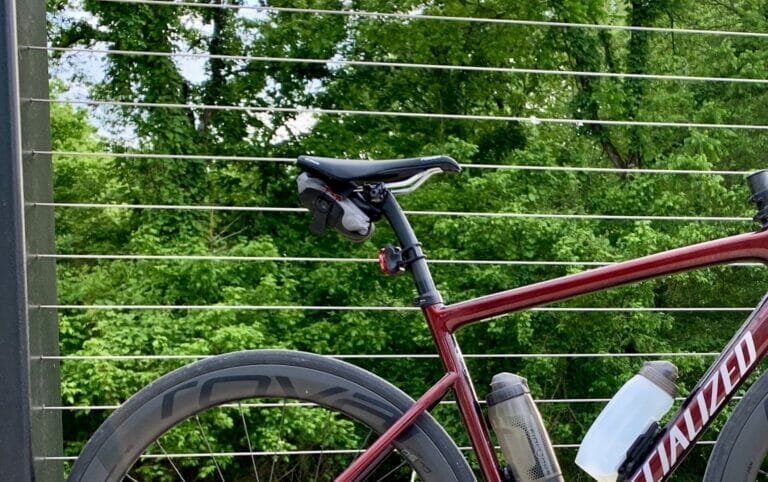

2 thoughts on “A Strong Freestanding DIY Bike stand that holds 7 bikes”
Very very informative. I have been looking for something like this. Thank you for this.
Thank you for reading. I’m glad you found this post useful and I can’t wait to see your build!